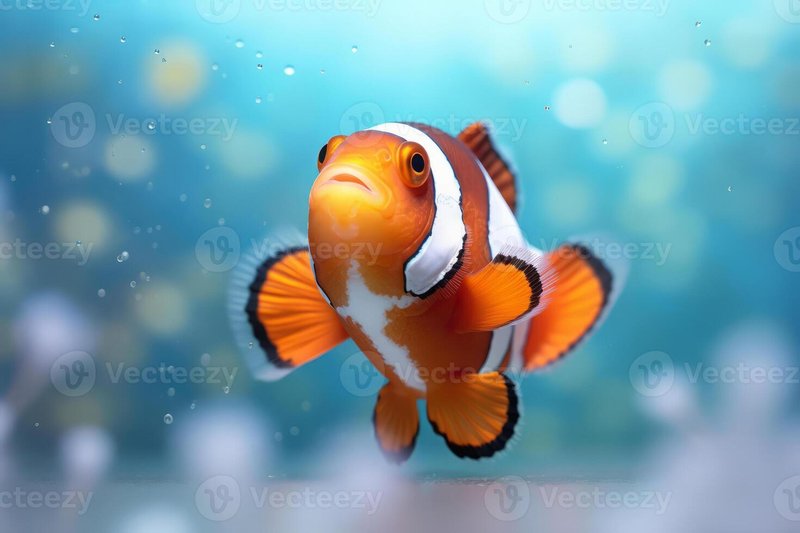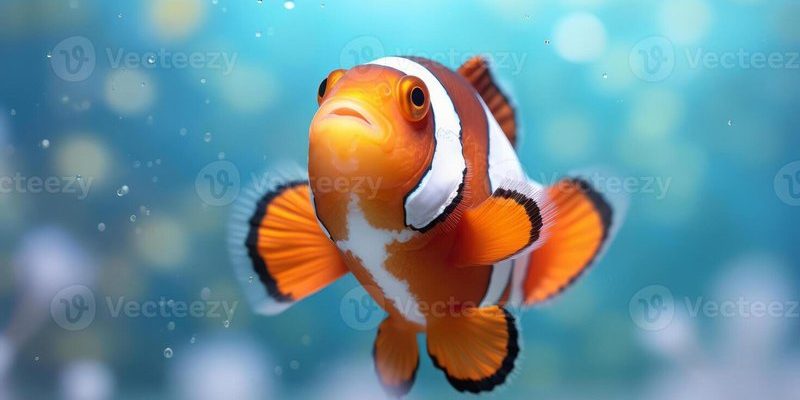
Clownfish, often cuddled up in the protective arms of sea anemones, have a fascinating relationship with these creatures. It’s like having a cozy home base that offers safety and a food source. You might be wondering how they keep track of their environment and talk to their fellow clownfish. Well, let’s dive in and learn about the navigation tactics and communication methods of these colorful little fish!
Understanding the Clownfish’s Habitat
Clownfish make their homes in sea anemones, which are like brightly colored underwater flowers. These anemones have tentacles that sting, but clownfish have a thick mucus on their skin that protects them. It’s a bit like wearing armor! They find shelter in these anemones primarily for safety from predators, but they also gain access to food scraps and other benefits.
The symbiotic relationship between clownfish and sea anemones is fascinating. The clownfish get protection, while the anemones benefit from the clownfish’s waste, which serves as fertilizer. It’s a mutually beneficial setup. So, how do these fish navigate this vibrant habitat?
Clownfish have excellent vision, allowing them to spot predators and food from a distance. They use their keen eyesight alongside their knowledge of the reef’s layout to navigate effectively. The familiar landmarks they remember help them find their way back to their anemone home, similar to how we recognize street signs or buildings in our neighborhoods.
How Clownfish Use Color and Patterns
Color plays a critical role in the life of a clownfish. The bright orange and white stripes serve as a warning to potential threats, signaling that they live in association with anemones, which can be dangerous. But it’s not just about defense. The vibrant colors also help clownfish attract mates and communicate with each other.
In the underwater world, colors can also indicate mood or health. A healthy clownfish will have vivid, bright colors, while a stressed fish might lose some of that vibrancy. This change in color acts as a visual cue to other clownfish. Imagine walking into a room where everyone’s wearing dull colors—you’d know something’s off, right? That’s similar to how clownfish read each other’s signals.
Besides visual signals, clownfish also rely on their body movements for communication. They perform a dance of sorts, moving in certain patterns that convey messages to their partners or families. This dance isn’t just for fun; it’s an essential part of their social interactions.
Using Sound to Communicate
You might think fish don’t talk, but clownfish have their own unique way of communicating through sounds. They produce a range of noises, from popping to clicking, that convey different messages. For example, a series of rapid clicks might signal excitement, while a slow pop could mean there’s danger nearby.
These sounds help fish stay in touch, especially in a noisy environment like a coral reef. Just like we use our voices to connect with friends, clownfish use their sounds to maintain relationships and warn each other about threats. Imagine trying to chat in a crowded cafe—sometimes you have to raise your voice to get your message across. Clownfish do something similar by adjusting their sounds based on their surroundings.
Interestingly, these sounds may also play a role in attracting mates. The patterns and types of sounds a clownfish makes could indicate its fitness or health, which is an essential factor in reproductive success.
How Clownfish Navigate Through Their Environment
Navigating a reef can be tricky, but clownfish have it down to an art. They use their strong memory and instincts to find their way around. Remembering the layout of their habitat is crucial—it’s like having a mental map of their neighborhood. They rely on visual cues, such as the shape of corals or the colors of nearby anemones.
When clownfish venture out, they often stay close to their home anemone. They know that while exploring is essential, safety is even more important. This cautious approach helps them avoid predators like larger fish or birds that might be lurking. Think about how you might stick close to familiar landmarks when exploring a new area—clownfish do something similar!
Moreover, clownfish also have a fantastic sense of smell, which helps them find food. They can detect the scent of nearby prey, guiding them towards a meal. Imagine walking into a bakery and being able to smell fresh bread from blocks away—that’s how these fish use their noses to navigate toward food sources.
Clownfish and the Importance of Social Structure
Clownfish live in groups known as a “clownfish family,” which consists of a dominant breeding pair and a few smaller, non-breeding fish. This social structure is vital for their survival. The dominant pair gets priority access to food and breeding rights, while the smaller fish play important roles in protecting the group.
The social interactions within these families are really interesting. When the dominant female dies, the dominant male can change sex and take her place, ensuring that the family can continue to thrive. That’s like if your team captain left the group, and one of the other players suddenly became the leader. This flexibility helps maintain the stability of the group.
Social behaviors also include sharing food and helping each other when danger approaches. They often take turns being the lookout, ensuring everyone’s safety. It’s a little bit like teamwork in sports, where everyone relies on one another to succeed.
The Threats to Clownfish and Their Navigation Skills
Despite being vibrant and skilled navigators, clownfish face several threats. Climate change is a significant issue, impacting their habitats and the health of sea anemones. Warmer ocean temperatures can lead to coral bleaching, which means clownfish might lose their homes. That’s like losing your favorite café or bookstore—it’s tough to find a similar spot!
Pollution is another danger for clownfish. Chemicals and waste that enter the ocean can harm both clownfish and their anemone homes. If their environment becomes toxic, their ability to navigate and communicate effectively could be seriously impacted.
However, clownfish have shown resilience. They adapt and find new ways to survive, which is pretty inspiring! By working together and relying on their senses, they keep thriving despite the changes in their world.
Clownfish are truly remarkable creatures. From navigating through the colorful and chaotic coral reefs to communicating with sounds and colors, they demonstrate a complex understanding of their environment. Their unique relationship with sea anemones not only provides them shelter but also enhances their survival.
In a world that’s constantly changing, understanding how clownfish navigate and communicate offers a glimpse into the wonders of marine life. By appreciating these small but mighty creatures, we can better understand the importance of protecting their habitats and the ocean as a whole. So next time you spot a clownfish, remember just how much is going on beneath the waves!

